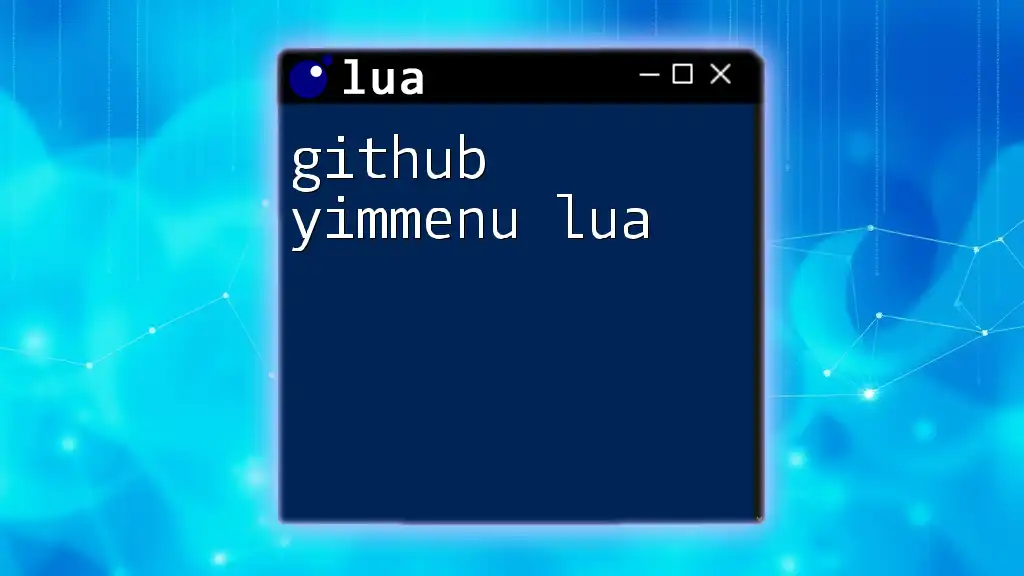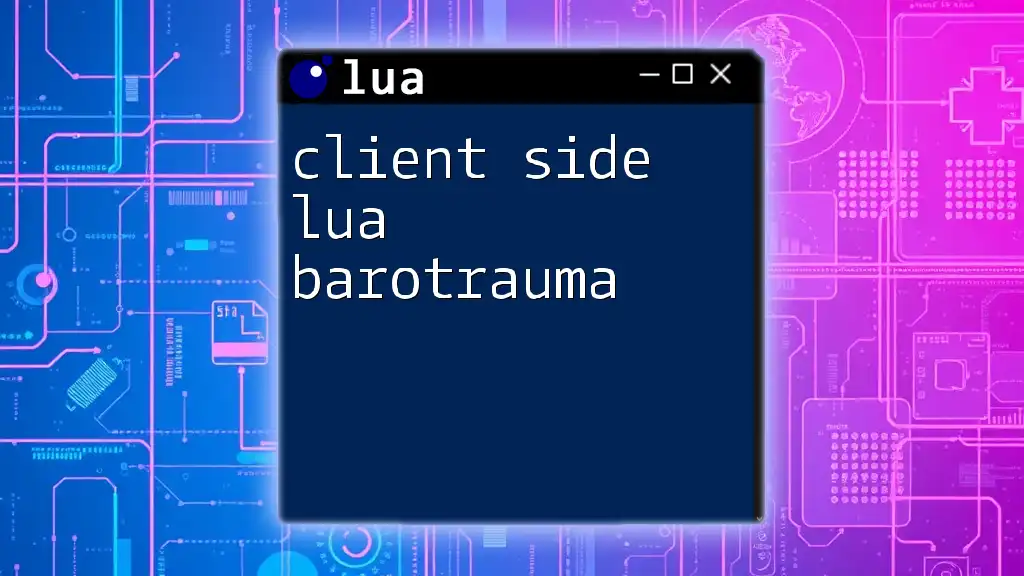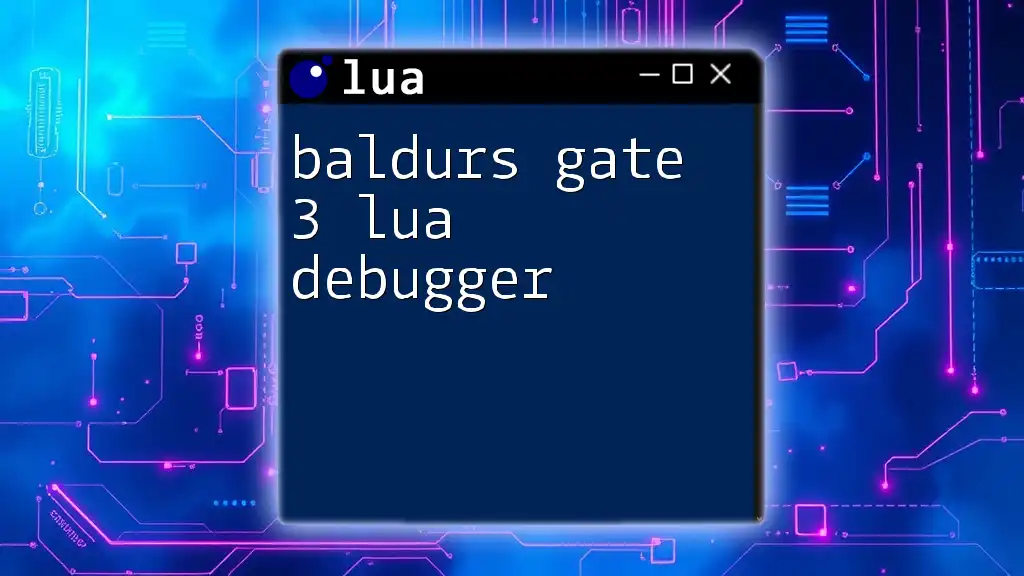The GitHub project "yimmenu" provides a customizable menu system in Lua, enabling developers to create interactive user interfaces for their applications.
Here’s a basic example of how to implement a menu using yimmenu in Lua:
local yimmenu = require("yimmenu")
local function on_select(item)
print("You selected: " .. item)
end
local menu_items = {"Option 1", "Option 2", "Option 3"}
yimmenu.show(menu_items, on_select)
What is YimMenu?
YimMenu is a versatile and efficient plugin for Neovim that allows users to create and manage menus using Lua. Its lightweight architecture and user-friendly design make it a preferred choice among developers for adding interactive menus to their projects.
Unlike other menu plugins, YimMenu focuses on performance and customizability, providing an intuitive way to work with options and commands. Using YimMenu, you can enhance user interfaces, making it easier for users to navigate and execute tasks within Neovim efficiently.
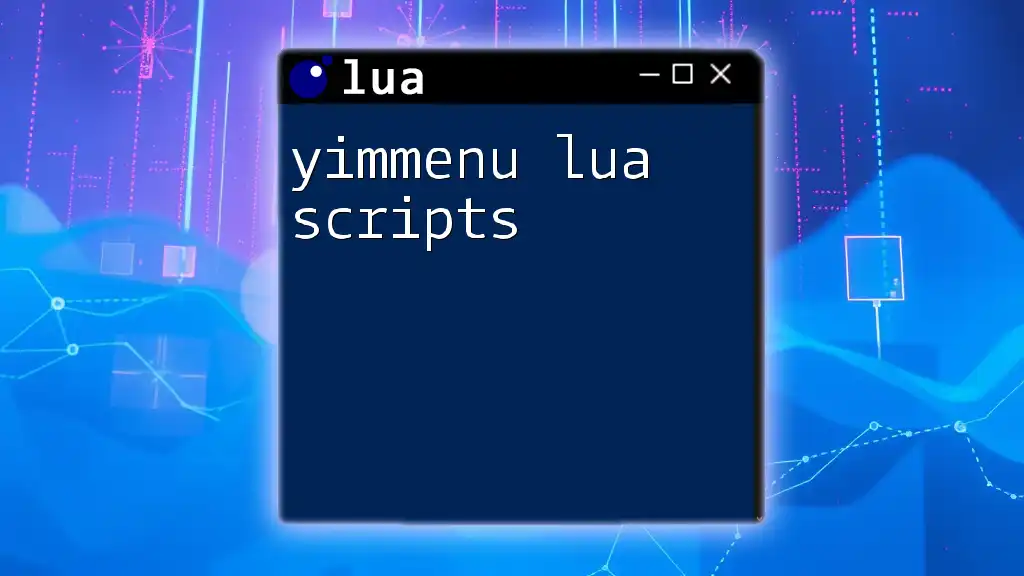
Setting Up YimMenu
Prerequisites
Before diving into YimMenu, it’s essential to have a basic understanding of Lua, as well as a working environment including Neovim and Git. Make sure you have the latest version of Neovim installed, as YimMenu takes advantage of its latest features.
Installing YimMenu from GitHub
To get YimMenu running, you can easily clone its repository from GitHub or install it using a package manager.
-
Cloning the Repository: You can clone YimMenu directly from GitHub using:
git clone https://github.com/yym/yimenu.git -
Using a Package Manager: For those using Packer or Vim-plug, adding YimMenu to your configuration file is straightforward. Here’s an example configuration with Packer:
use { 'yym/yimenu', config = function() require('yimenu').setup {} end }
This will ensure YimMenu is installed and ready to be configured.

Configuration of YimMenu
Basic Configuration Options
After installation, customize YimMenu to fit your needs. The primary configuration parameters allow you to control aspects such as appearance and behavior. Here’s a basic example:
require('yimenu').setup {
theme = "gruvbox",
width = 30,
height = 10,
mappings = {
select = "j",
quit = "q",
}
}
In this example:
- theme sets the visual style.
- width and height define the menu dimensions.
- mappings allows you to customize keybindings for navigation.
Advanced Configuration Techniques
As you become more comfortable with YimMenu, you may want to delve into advanced configuration options to tailor the menu’s appearance further. Consider customizing color schemes and font styles:
require('yimenu').setup {
theme = {
background = "dark",
foreground = "light",
highlight = "blue",
},
}
These settings enhance the user interface, making it visually appealing while ensuring usability.
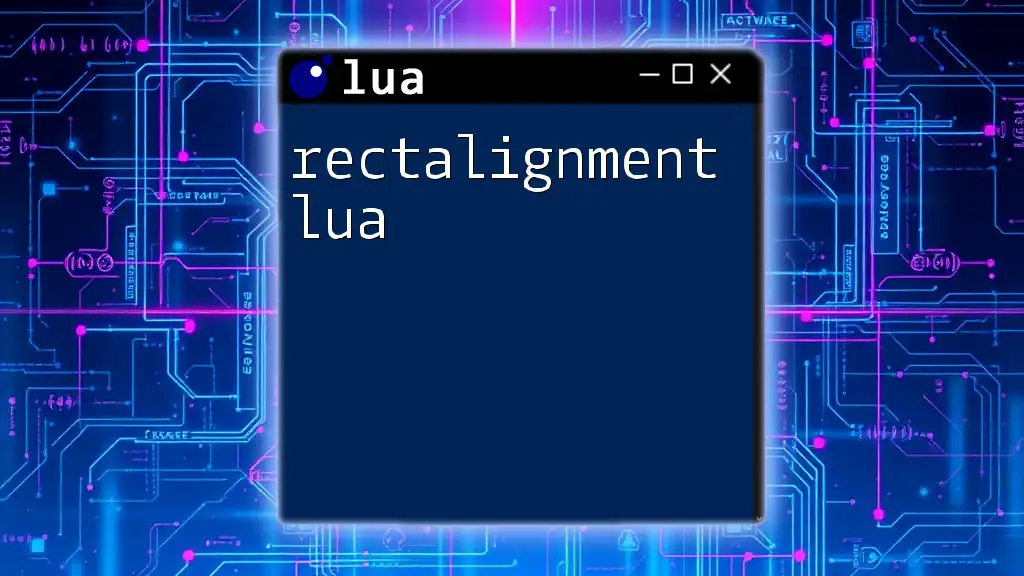
Using YimMenu
Creating Simple Menus
One of YimMenu’s core functionalities is to create straightforward menus. To set up a basic menu, define a Lua function and use YimMenu to display it:
local choices = {
{ "Option 1", function() print("You selected Option 1") end },
{ "Option 2", function() print("You selected Option 2") end },
}
require('yimenu').open(choices)
In this example, when a user selects "Option 1" or "Option 2," a message will be printed to the console. This foundational setup paves the way for more complex menus.
Dynamic Menus
Dynamic menus allow you to adjust options based on user input or the current context. By utilizing Lua functions, you can create responsive menus that change on the fly. Here's how you can set up a dynamic menu:
local function dynamic_menu()
local context_choices = {
{ "Open File", function() vim.cmd("e") end },
{ "Quit", function() vim.cmd("q") end },
}
require('yimenu').open(context_choices)
end
With this approach, users can experience context-sensitive functions, making the menu more interactive and functional.
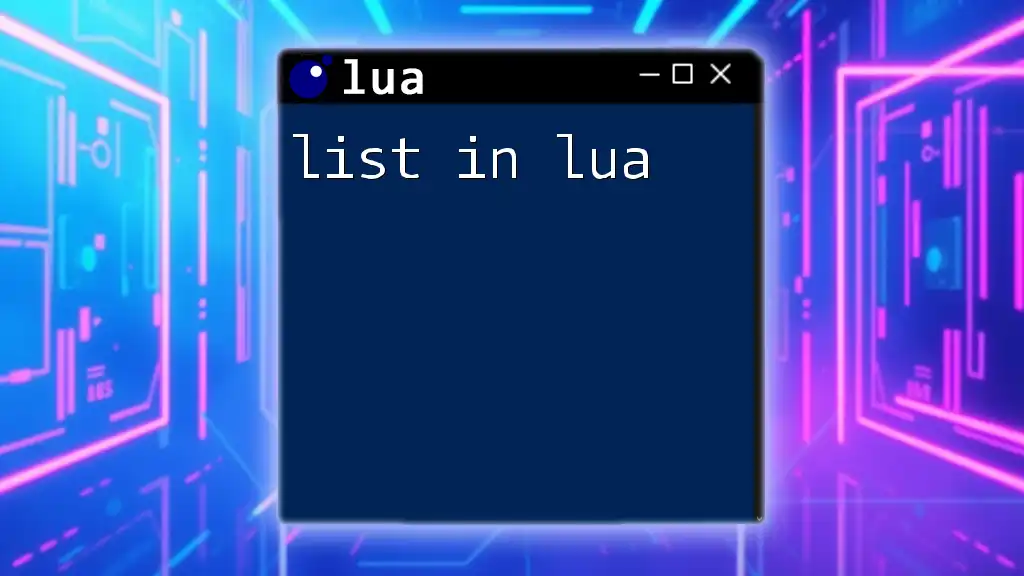
Handling User Input
Advanced Keyboard Bindings
To enhance user interaction, you can bind keys to specific actions within the menu. Binding provides quick access to menu functionality, enhancing the workflow. Here’s an example:
vim.api.nvim_set_keymap('n', '<leader>m', ':lua require("yimenu").open()<CR>', { noremap = true, silent = true })
This binding allows the user to open the YimMenu with a simple keystroke, streamlining the experience significantly.
Input Validation
Validating user input can prevent errors and improve the overall experience. It’s crucial to ensure that the user makes appropriate selections. Here’s a code snippet that demonstrates input validation:
local function validate_input(input)
if input == "" then
print("Please enter a value.")
return false
end
return true
end
Incorporating validation checks ensures that the menu is robust and handles user interactions gracefully.
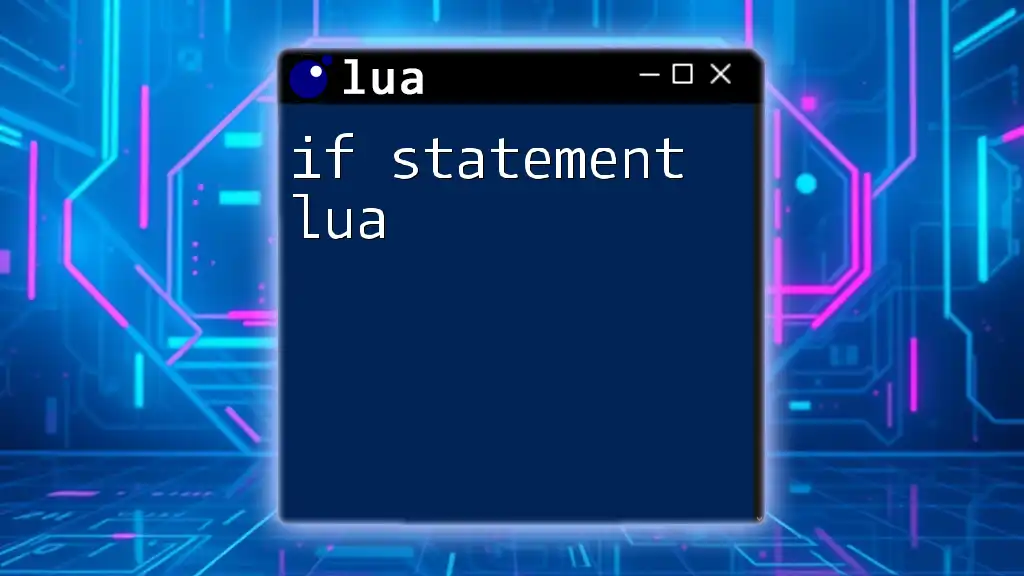
Utilizing GitHub Resources
Accessing the YimMenu GitHub Repository
To stay updated, visit the YimMenu GitHub repository. Its resources offer valuable insights, including documentation, usage examples, and recent updates. Engaging with GitHub allows you to interact with the community and share your experiences.
Contributing to YimMenu
Contributing to YimMenu not only helps the plugin grow but also encourages collaboration and innovation in the development community. Whether it’s reporting bugs or suggesting features, your input is invaluable. If you want to make improvements or fix issues, check the contribution guidelines and consider creating a pull request.

Conclusion
By integrating YimMenu into your Neovim setup, you tap into the power of Lua to enhance user experience and menu interactivity. With simple configurations and dynamic options, YimMenu becomes an indispensable tool in your development arsenal.
As you embark on your journey with YimMenu, experiment with different settings and menus to discover its full potential. Join the YimMenu community on GitHub to stay connected, share your findings, and contribute to this fantastic open-source project. Happy coding!

Additional Resources
For further learning, consult the official documentation for both YimMenu and Lua. Engage with community forums and discussion boards where you can exchange knowledge, ask questions, and refine your skills. Embrace the journey of learning and mastering YimMenu!

